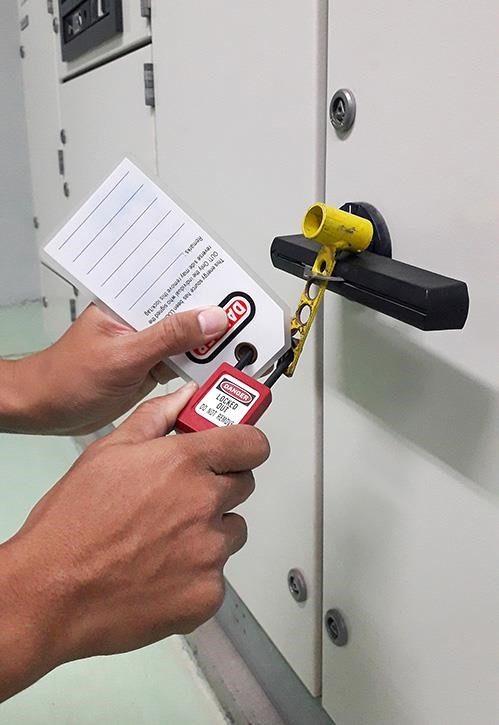Lockout devices are designed to keep energy-isolating knobs and buttons in the “off” position, preventing machines and equipment from becoming energized. Most often utilized during maintenance procedures or malfunctioning situation, Lockout/Tagout (LOTO) procedures aim to prevent hazardous energy from causing injury or death. While our service department most commonly deals with electrical, hydraulic and pneumatic energy, it is important to consideration LOTO procedures for any thermal and chemical energy on your shop floor.

OSHA defines lockout/tagout (LOTO) as a “specific set of practices and procedures to safeguard employees from unexpected energization or startup of machinery and equipment, or the release of hazardous energy during service or maintenance activities.” Unfortunately, failure to comply with LOTO ranks in OSHA’s top 10 most frequently cited standards.
Take some time to review your procedures and follow these 5 steps to work towards an OSHA Compliant LOTO Procedure:
- Develop procedure. The development of a lockout/ tagout procedure must be a collaborative effort. Documentation must be thorough and made accessible to your entire team. While a detailed plan helps to clarify any confusions, many recommend a quick reference sheet be posted on the shop floor.
- Write out machine and task-specific procedures. While the LOTO concept is the same for every machine that produces hazardous energy, your written procedures should give instruction for locking out every piece of equipment on the floor. Specific instruction for shutting down, isolating and securing each machine should be available in an emergency and clear to those not familiar with a machine. Procedures should include steps for the placement, removal and transfer of lockout/tagout devices.
- Identify and mark energy-isolation points. All energy-control points on every machine should be labeled and or tagged using a standardized system. This includes valves, switches, breakers and plugs. Ideally the labels and tags refer back to the detailed instruction in your LOTO Procedure.
- Acquire the proper lockout/tagout devices. A variety of lockout/tagout devices, for all types of application, are available online. A quick Google search will give options for everything from circuit-breaker lockouts and valve lockouts to multiple types of handle lockouts. Make sure you have the necessary lockouts devices should you need them.
- Lockout/tagout training and audits. Once procedures are written and energy-isolation points are labeled, take the time to train your employees on your LOTO procedure. This training should included OSHA guidelines and touch on the procedure for each machine on your shop floor.
- Lockout/tagout training and audits. Once procedures are written and energy-isolation points are labeled, take the time to train your employees on your LOTO procedure. This training should included OSHA guidelines and touch on the procedure for each machine on your shop floor.
When it comes to developing a lockout/tagout procedure, OSHA outlines what a typical lockout procedure looks like in the 1910.147 App A Standard. The team in Fox Machinery’s service department are happy to answer any questions you may come across developing your LOTO Procedure.
